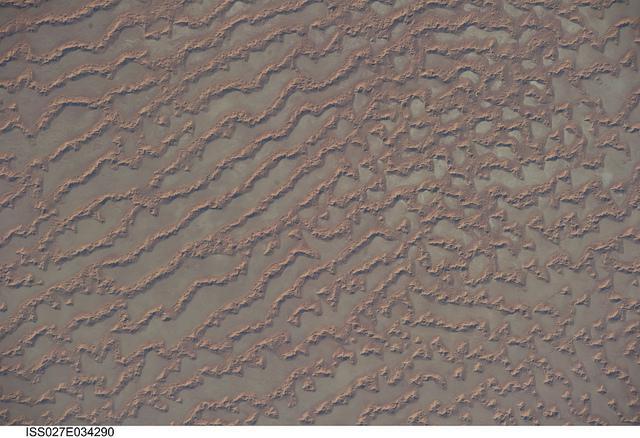Ar Rub al Khali #

This photo, taken from the International Space Station, highlights a part of the Ar Rub al Khali located close to its southeastern margin in the Sultanate of Oman. Reddish-brown, large, linear sand dunes alternate with blue-gray interdune salt flats known as sabkhas at left.
The major trend of the linear dunes is transverse to northwesterly trade winds that originate in Iraq (known as the Shamal winds). Formation of secondary barchan (crescent-shaped) and star dunes (dune crests in several directions originating from a single point, looking somewhat like a starfish from above) on the linear dunes is supported by southwesterly winds that occur during the monsoon season (Khareef winds).
The long linear dunes begin to break up into isolated large star dunes to the northeast and east (right). This is likely a result of both wind pattern interactions and changes in the sand supply to the dunes. The Empty Quarter covers much of the south-central portion of the Arabian Peninsula, and with an area of approximately 660,000 sq km (255,000 sq mi) it is the largest continuous sand desert on Earth.
The Empty Quarters hyperarid climate and the difficulty of travel through the dunes has not encouraged permanent settlement within the region. There is geological and archeological evidence, however, to support cooler and wetter past climates in the region together with human settlement.
This evidence includes exposed lakebed sediments, scattered stone tools, and the fossils of hippopotamus, water buffalo, and long-horned cattle.